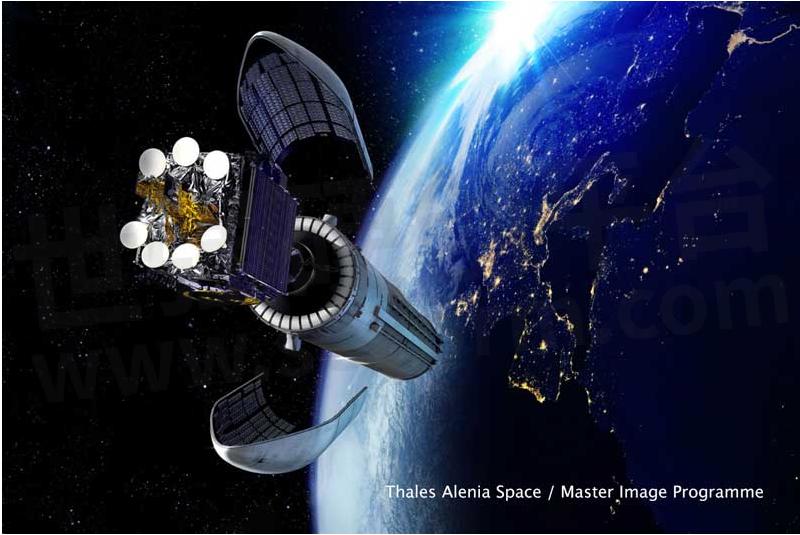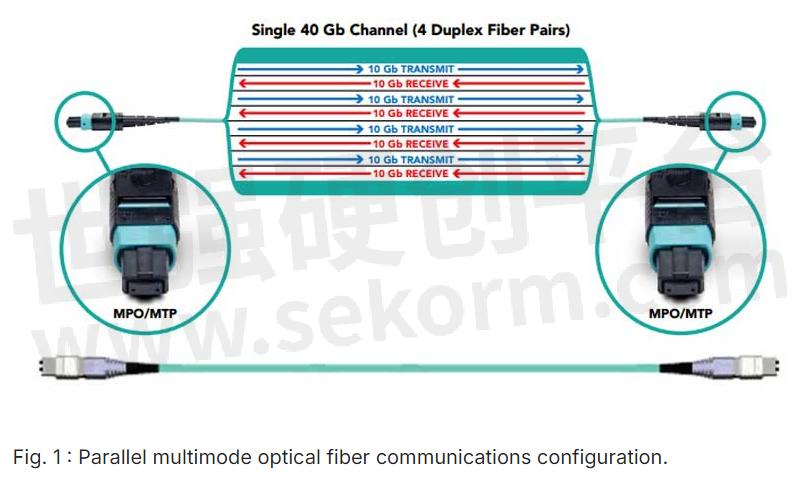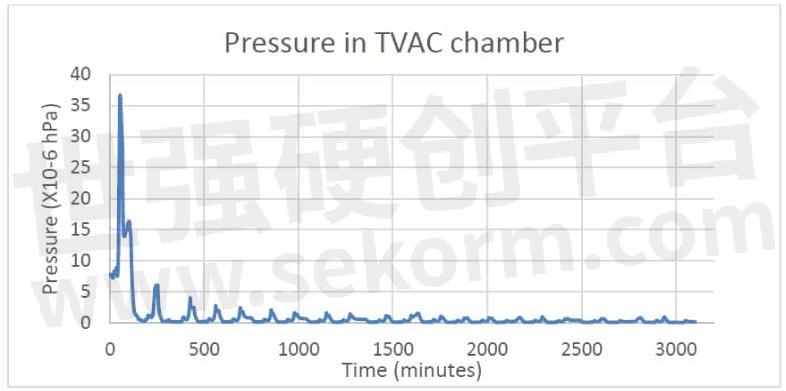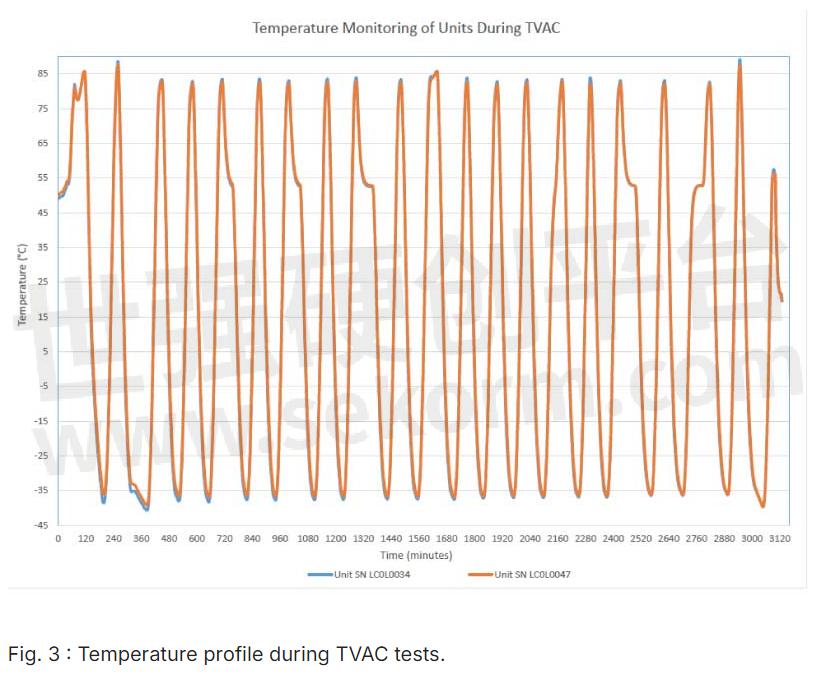Reliability Testing of COTS Fibre Optic Transceivers

Optical fiber communications offer the largest data processing capacity over any other technology; with the added benefit of being associated with small weight and low power consumption. Optical communication is a proven technology that has been deployed in harsh defense and avionics applications for a large number of years. Intra- satellite applications; offering services such as high-speed Internet, in-flight connectivity and broadband connectivity to rural areas; being associated to distances limited to tens of meters, the most adapted technology for such an environment is parallel multimode fiber optics transceiver-based communication links.
By Jocelyn Lauzon, Guillaume Blanchette, Pierre Cardinal. Reflex Photonics Inc.
This article was presented at the International Symposium on Reliability of Optoelectronics for Systems (ISROS) in November 2019.
Abstract
Optical fiber communications offer the largest data processing capacity over any other technology; with the added benefit of being associated with small weight and low power consumption. Optical communication is a proven technology that has been deployed in harsh defense and avionics applications for a large number of years. Intra- satellite applications; offering services such as high-speed Internet, in-flight connectivity, and broadband connectivity to rural areas; being associated with distances limited to tens of meters, the most adapted technology for such an environment is parallel multimode fiber optics transceiver-based communication links.
It is electro-magnetic interference (EMI) insensitive and based on vertical cavity surface emitting lasers (VCSELs) offering the best possible performance stability with temperature, to avoid the use of power-hungry temperature controllers. Ideally, this proven technology, offered as commercial off-the-shelf (COTS) products, benefitting from volume production assembly processes to lower its sales price, could also meet the space applications specific additional requirements such as single event effect (heavy ions), total ionizing dose (gamma rays) and total non-ionizing dose (protons) radiations, live vacuum thermal cycling (TVAC) and outgassing.
We will see that critical adjustments of the defense and avionics COTS fiber optics Transceivers have to be made to meet the space requirements; more specifically for single event effect radiation robustness. These adjustments not being related to the mechanical integrity of the product, defense and avionics related qualification testing of space optimized COTS fiber optics transceivers, such as live random vibrations, mechanical shocks, thermal shocks, rapid decompression, temperature cycling, lifetime and damp heat tests, have been verified to be successful once again.
During this presentation, we will share these test results and the most recent radiation, live TVAC and outgassing test results to demonstrate space applications COTS fiber optics transceiver can be readily made available to large bandwidth communication satellites, as well as defense and avionics system integrators, for short term deployment.
Parallel multimode optical fiber communications are based on Parallel optical fiber transceivers using VCSEL laser sources operating at 850 nm. The VCSEL sources offer better performance stability over temperature than edge emitting semiconductor laser sources, to avoid the use of power-hungry temperature controllers1.
For communication satellite applications, system integrators typically prefer to use their host board micro-controller for monitoring and control of the optical transceivers. Thus, the space applications product variation of the transceiver does not include an integrated micro-controller.
Such fiber optic transceivers, in many product variations, have been offered as commercial off-the shelf (COTS) products for a large number of years. They thus benefit from volume production assembly processes to lower their sales price.
Introduction

Optical fiber communications is a mature technology for long-haul (> tens of km) terrestrial links, relying on wavelength-division multiplexing and singlemode optical fibers. For communications associated with capacities larger than 1Gbps, optical fiber communications has proven to be the technology of choice over copper. For short reach (of the order of 100m or less) large capacity communications, such as those associated with harsh environments, for defense and avionics applications; optical fiber communications can now be considered as a field proven reliable technology that has been deployed for many years2. In this case, it is relying on parallel channels multimode optical fiber technology with VCSEL laser sources.
Short reach communications applications range from intelligent jet fighters to RADAR arrays having to process huge amounts of data. The next step is to introduce optical fiber communications to space applications, such as intra-satellite links. As the need for larger capacities is present for satellite applications, only long-term reliability concerns could delay the implementation of this technology for space applications. It will be demonstrated that these reliability concerns have now been alleviated and the deployment of communication satellite systems based on this technology is currently under way.
Some of these satellite systems being deployed will be competing with terrestrial high-speed Internet communication systems, with the added feature of offering in-flight connectivity and broadband connectivity to rural areas. These satellite systems would provide mobility customers with unsurpassed ability to efficiently and flexibly modify their network in real-time3. These systems can be deployed as geo- stationary satellites or low-earth orbit constellations.
Parallel optical fiber transceivers

Parallel multimode optical fiber communications (Figure 1) is the best option for harsh environment communications because it offers a significant advantage over copper communications for size, weight and power (SWaP) which makes an even more important difference for space applications. This technology is electro-magnetic interference (EMI) insensitive, offers bandwidths of up to 28Gbps per channel, and it is much more forgiving to mechanical shock, vibrations and temperature variations as its alignment tolerance is much larger than for singlemode fibers. The multimode optical fibers associated with these transceivers are OM3/OM4 types, with a graded- index 50 µm core and 125 µm silica glass cladding diameter. Having multiple parallel channels increases the system capacity linearly, without increasing the susceptibility, complexity, size, weight, and power in the same manner; thus offering the best robustness to capacity compromise4.
Defense and avionics qualification testing
As the optical fiber transceivers have initially been developed and qualified for defense and avionics applications, only if the mechanical integrity of the device remains unchanged would these qualification tests remain relevant for the space product variation.
The critical adjustments made to the legacy device circuit to ensure it will meet space requirements are associated with custom-designed VCSEL drivers. Having optimized VCSEL parameters to cover all channels of the product is what ensures meeting the reliability over lifetime requirements of the space industry: Time To Failure (TTF) 1% larger than 20 years. This adjustment does not involve any modification to the mechanical integrity of the device. It does however involve many hours of circuit optimization and circuit element tuning.
Thus, the defense and avionics qualification tests are relevant for intra-satellite applications. These tests were reconducted to confirm the reliability of this product variation, with a very low risk of failure.
As expected, the following qualification tests based on military specifications5 were completed with success: random vibration, mechanical shock, thermal shock, temperature cycling, damp heat, rapid decompression, cold storage, lifetime tests and live fiber pull tests.
The tests were conducted as per ECSS-Q-ST-70-02C with the following pass criteria:
RML < 1.00%, CVCM < 0.10%.
The obtained successful results were the following:
RML = 0.049%, CVCM = 0.007%, TML = 0.123%.

Fig. 2 : Pressure profile during TVAC tests.
The temperature profile was the following:
The specifications for the TVAC tests are the following:
Vacuum better than 5×10-5 hPa throughout the cycling process
20 cycles, −40℃ to 85℃ with ±5℃ precision
Live traffic at 10.3125Gbps throughout the process
Bit error rate (BER) to always be better than 10-12
Dwell time at temperature extremes of at least 5 mi
Ramp rates as fast as possible without exceeding 10℃/min

The ramp rate did not exceed 4℃/min and the 20 cycles test total duration was 51 hours and 25 minutes. The minimal vacuum was 3.7×10-5hPa, with an average value of 5×10-7hPa (see Figure 2).
For the 2 units simultaneously tested, with 4 channels each unit in a loopback configuration at their sensitivity limit (attenuator adjusted to the sensitivity limit for each channel), the worst case result was 4 errors, for a bit error rate of 2.1E-15.
As for the radiation tests, the SEE tests were performed as per ESCC 25100 with 5 heavy ion beams with different linear energy transfer (LET): Ne, Ar, Cu, Ag, Ho to a fluence of 107 ions/cm2. During exposure to each heavy ion beam, events were monitored to obtain the cross-section vs LET curve.
TNID tests were implemented with a 100 MeV proton beam, up to a total dose of 5E12p/cm2. It was demonstrated that, for this type of radiation, the impact on the performance of the selected optical fiber transceivers were limited and thus acceptable for long-term space applications.
TID tests were performed as per ESCC 22900 with a gamma ray Co60 dose rate of approximately 43 rad/h for a total cumulative dose of 100 krad. The results of these tests demonstrated the selected optical fiber transceivers had limited sensitivity to these radiations, confirming they can meet intra-satellite communication systems requirements.
Space qualification test results
The additional qualification tests that have to be conducted on the optical fiber transceiver to be qualified for intra-satellite space applications are the following:
Outgassing
Live Temperature Cycling under Vacuum or TVAC
Radiation: Single Event Effect (SEE), Total Non-Ionizing Dose (TNID) and Total Ionizing Dose (TID).
Outgassing determines the ability of devices under test to operate in a vacuum space environment, such as circuits inside satellites, without risk of contaminating the elements with which it is nearby.
Conclusion
The need for inta-satellite optical communications is a reality.
Highly reliable optical fiber transceivers using parallel optics over OM3/OM4 multimode fibers is the best technology to support intra-satellite optical communications.
With a dedicated design associated with critical circuit adjustments, COTS optical fiber transceivers can meet space applications requirements and are thus ready for short term deployment in large bandwidth communication satellites.
- +1 Like
- Add to Favorites
Recommend
This document is provided by Sekorm Platform for VIP exclusive service. The copyright is owned by Sekorm. Without authorization, any medias, websites or individual are not allowed to reprint. When authorizing the reprint, the link of www.sekorm.com must be indicated.

































































































































































































































































































































































































































































































































































































































































































































































































































































































































